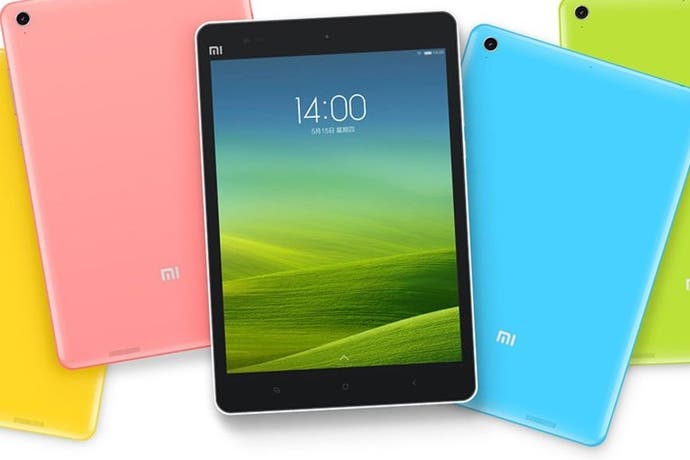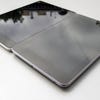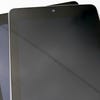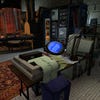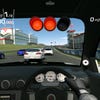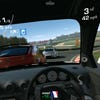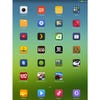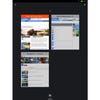Xiaomi MiPad with Nvidia Tegra K1 review
Desktop GPU architecture arrives on mobile. Do you really get last-gen console performance in an iPad mini form-factor?
On the face of it, the Xiaomi MiPad is irresistible. We have the most powerful mobile chipset on the planet within an iPad mini form-factor, put together by one of the few true enthusiast-friendly OEMs working today. It's available in China right now, costing the equivalent of just £140 - but good luck on getting one, in the short term at least. The initial 50,000 unit allocation sold-out mere moments after it went on sale - the mark of a highly desirable piece of technology. But specs aside, what so special about the MiPad?
Well, Xiaomi specialises in cutting-edge devices, built around its own, extremely well-received iteration of the Android OS, known as MIUI - now in its 5.5 iteration, based on Android 4.4.2. On top of that, unlike many Far East manufacturers, Xiaomi is forever providing new updates to its hardware (all of which support English). And those products tend to be rather special - we reviewed the MI2 smartphone and found it to be exceptional, but there has since been numerous new phones that provide state-of-the-art specs in ultra-small form factors, plus there's the small matter of the company's 49-inch 4K SmartTV - a snip at just £400. In short, when Xiaomi debuts its first tablet, gadget fans the world over sit up and take notice.
First impressions of the MiPad can be summed up easily: it's very much akin to a Retina iPad mini, complete with rear plastics reminiscent of the iPhone 5C. The front of the device is covered with Gorilla Glass 3, under which you'll find a 7.9-inch 2048x1536 IPS display made by Sharp. It isn't quite as bright as the miniature Apple tablet, but it is better calibrated, covering 97 per cent of the sRGB gamut.
Shiny plastics might not seem compatible with decent "gripability", but the MiPad works fine here, even in hot and sweaty conditions. Overall build and materials quality is solid - but not quite perfect. You can push in the back cover ever so slightly if you apply a bit of force (not that the device is affected in any way). Similarly, the chrome volume and power buttons on the side of the unit have a sharp edge to them, another small niggle that detracts from the premium feel of the device. This is a first-run product, so rough-edge elements like this may well end up being sorted later on - Xiaomi is so well-respected precisely because it does act upon user feedback.
Other elements of the pad are par for the course - at the top from left to right you have a light sensor, a multi-coloured status LED and a five-megapixel front camera, with twin microphones on the rear of the unit. On the bottom we have three touch-sensitive buttons - multitasking (doubling as the menu button with a long press), home and back - that are invisible without a backlight. This is a bit of a pain at first, as you need to touch the screen to illuminate them.
Rounding off the port selection we have a headphone jack on the top and a USB socket with OTG support on the bottom edge - here you can hook-up gamepads, mice etc, while the left-side of the unit houses a micro-SD slot capable of boosting storage by up to 128GB. Photography is taken care of via a rear eight-megapixel f2.0 camera, also capable of 1080p30 video (specs suggest a 720p90 mode, but it's not exposed right now). It looks like it's the same snapper found in the MI2 smartphone, which in turn is the same part found in the iPhone 4S - a bit behind the times then, but it gets the job done.
Overall then, the MiPad is a well-made device with a robust feature set, but obviously it's the brand new Tegra K1 that is the true star of the show. Nvidia's latest chip packs in four ARM A15 cores (along with a 'companion' core for low-power operation) along with a single SMX (a cluster of 192 CUDA cores) from the desktop Kepler graphics card architecture. This is where things get interesting - Kepler has support for all major rendering APIs, and is capable of phenomenal things.
To put it into perspective, two SMXs can run Crysis 3 on medium settings at 720p at between 20-40fps, and Battlefield 4 at the same quality level at 30-50fps. The question is, what can one SMX achieve, and are the low-power CPU cores an issue? Let's get to the bottom of the issue by rolling out some benchmarks. Note that there's no x86 version of the latest GFXBench right now - so the Manhattan benchmark only runs on ARM devices for now, while Shield lacks the requisite high-end OpenGL ES support for this specific test. UPDATE 4/8/14 15:36: We've updated the MiPad with Android 4.4.4 and re-benched. We see a significant improvement in CPU tests.
| Xiaomi MiPad | Retina iPad mini | Nvidia Shield | MS Surface Pro 2 | Razer Edge | |
|---|---|---|---|---|---|
| Geekbench Single-Core | 1080 | 1395 | 940 | 2504 | 2440 |
| Geekbench Multi-Core | 3451 | 2524 | 2894 | 4762 | 4994 |
| 3DMark Graphics | 35317 | 18763 | 17373 | 47841 | 56247 |
| 3DMark Physics | 19371 | 8096 | 13814 | 30343 | 33704 |
| 3DMark IceStorm Unlimited | 29856 | 14539 | 16382 | 42324 | 48968 |
| GFXBench T-Rex | 57.1FPS | 26.1FPS | 24.4FPS | 63.0FPS | 96.0FPS |
| GFXBench Manhattan | 28.4FPS | 12.9FPS | - | - | - |
We've benched the Tegra K1 against its predecessor, its Apple competition, the most popular x86 tablet on the market and the insanely wonderful Razer Edge. The aim here is simple - we're comparing Nvidia's new SoC with the best of the last generation, and the two best x86 performance monsters. The results are tantalising - Tegra K1 offers up a more-than-2x GPU boost over current-gen mobile technology, though CPU power is relatively more restrained with a 25 per cent boost - pretty much equivalent to the increase in clock-speed from Tegra 4 to K1.
It's in looking towards the more powerful x86 devices that Tegra K1 becomes more interesting. 3DMark graphics scores suggest that it has 75 per cent of the raw rendering power of the Surface Pro 2 - a tablet that can run a great many modern era games. Looking towards the Razer Edge - featuring a dual-SMX Kepler chip operating at around 500MHz - the K1 has around 63 per cent of its GPU power. Re-familiarise yourself with the Edge review if you will - this thing can play Crysis 3 beautifully as long as you're sensible with your settings.
Nvidia's marketing talked about Tegra K1 hitting the last-gen console standard - something John Carmack took issue with, but on a very rough scale, we'd say that the Surface Pro 2's GPU performance is fairly comparable to Xbox 360 and by that metric, it's close but not quite there. However, assuming that mobile graphics' relentless upwards trajectory continues, another 2x leap in performance would see the last-gen console standard effortlessly surpassed and we'd be at the low-end of desktop GPU performance. At that point, virtually the entire library of PC titles becomes ripe for conversion.
However, in the here and now, we're left with the existing Android catalogue to play with on the MiPad, and there's a definite sense that gameplay bottlenecks are more about CPU resources and Android's inherent overhead. Few of the 3D titles we played could sustain a locked 60fps - there was always a degree of stutter, something Android gamers are probably accustomed to in their 3D gaming. That even extends to titles like Sonic the Hedgehog 4, Episode 2, which runs at a sustained 60fps but still manifests judder on-screen. We also note that many titles don't run at the "retina" resolution either, a common issue with Android releases. The vast multitude of phones and tablets out there means that developers rarely optimise to specific units - in contrast to the iOS ecosystem with its more limited range of devices.
What we will say is that the MiPad is an emulation monster - virtually any system up to and including the Dreamcast runs at full-speed, with just a minority of titles on certain emulated systems not able to keep pace. Beyond the Dreamcast level, things get dicey - to put that into perspective, the Dolphin emulator is only able to provide GameCube playback at one-third to half-speed. Once again, it seems that the CPU is the bottleneck there (Dolphin itself is dual-core only, meaning that two K1 cores are left untouched).
Illustrating gameplay performance is tricky. The MiPad doesn't have any form of video output, so the only way we can show you how games play is to root the device, install FPS Meter (a kind of Android FRAPS if you like) and film some titles in action. The end result is that the revolutionary silicon in the MiPad translates across to an evolutionary boost to Android gaming performance. Google Play won't allow us to download our Half-Life 2 or Portal purchases, but porting across our Shield downloads, we note an immediately apparent resolution boost and enormously improved texture filtering over the Tegra 4 version, and it's running more smoothly too - albeit not at anything like a locked 60fps. The improvements suggest that Nvidia has indeed produced K1-enhanced code and we'll look at this in more depth as soon as we have official downloads to work with.
Nvidia has done a good job in releasing showcase software with specific Tegra optimisations in the past. A game not available for testing was Frozenbyte's Trine 2 - a proper console title ported over to Tegra K1 by the original developer. Along with the Half-Life 2 and Portal conversions, we hope to test that out soon because it seems that only by targeting this new hardware directly will we see what K1 is truly capable of.
In the here and now, it's difficult to avoid the feeling that Tegra K1 is held back by the operating system it's running on and that we've no real idea of just what it's capable of without bespoke games to really put it through its paces. We get the idea that the MiPad is a piece of hardware waiting for the right software to turn up - something that also applies to the MIUI OS the tablet ships with.
A lot of the "added value" apps we loved in the smartphone version of the OS have yet to make the transition to the big screen, so currently you can't change themes or customise gadgets, security management apps are absent, and there's no root access out of the box. However, most of the core apps make the cut for the launch version of the OS, including the MIUI video and audio player, the browser, the file manager with FTP and WiFi sharing, along with cloud drive access.
There remains the sense that it's all rather work-in-progress though - there are currently some translation issues, some app installation dialogues have buttons labelled in Chinese and text is occasionally too long for the dialogue windows, spilling out of their confines. There are also some oddities in its day-to-day operation too. For example you can't disable the swipe-to-unlock screen - the option is there, but it is greyed out. As usual with Xiaomi products, Google services are also absent out of the box, but it's easily remedied by going into the built-in market app and downloading Google Installer, adding any and all of the Google services including the all-important Google Play marketplace app.
It's worth pointing out that Xiaomi is aware of these issues and has a proven track record in rolling out OS updates - it's just a matter of time before these bugs and gremlins are resolved. However, if you're expecting an OS experience on par with Shield, or indeed previous Xiaomi products, the chances are that you're in for a bit of a wait.
Finally, let's talk battery life. Questions have arisen concerning Tegra K1's power envelope, with some suggesting that its desktop origins may have an undue impact on lastability. Fear not - the MiPad generally performs well here. You should be able to get at least five hours' worth of GTA San Andreas gameplay out of the 25.46WHr battery before it requires recharging, around ten hours of 1080p movie playback and eleven hours of low-impact use - web-browsing etc. All told, this isn't quite as efficient as the iPad mini, which has a marginally smaller battery, but it's still absolutely fine for a 7.9-inch tablet.
Xiaomi MiPad - the Digital Foundry verdict
Xiaomi's wares are not for everyone, but for an enthusiast who loves to get the most out of their hardware and is happy to regularly install new updates and explore niche features, the Chinese firm's products are irresistible. The MiPad certainly makes the grade in terms of component choice and overall build quality, but jumping in now with an import purchase may not be the wisest choice. The experience of using the device feels almost as if we're still in the beta phase - and it's clear that there's much to do before the product can be considered final.
But looking beyond the rough edges in the software, it's all about Tegra K1 and the new benchmark in mobile performance. In terms of its core design and architecture it's a revolution, but it has to be said that in terms of day-to-day usage, it comes across as much more of an iterative upgrade. Tegra 4 and the Apple A7 are already exceptionally quick chips - in non-gaming applications, the CPU boost is welcome but not immediately noticeable while K1 clearly needs bespoke titles to get the best out of it. The more-than-2x GPU boost obviously won't translate into double the frame-rate, let alone a revolutionary new experience - the K1 hardware will only come into its own when we have games that specifically target high-end devices and for this review at least, such software is thin on the ground.
Overall, the MiPad is an impressive piece of kit. The basics are there - this is a serious alternative to the Retina iPad mini, matching its lovely display and beating it in terms of raw power - but it does come across as something of a "jam tomorrow" proposition. It's a really nice piece of hardware waiting for the software to arrive that will truly get the best out of it.
